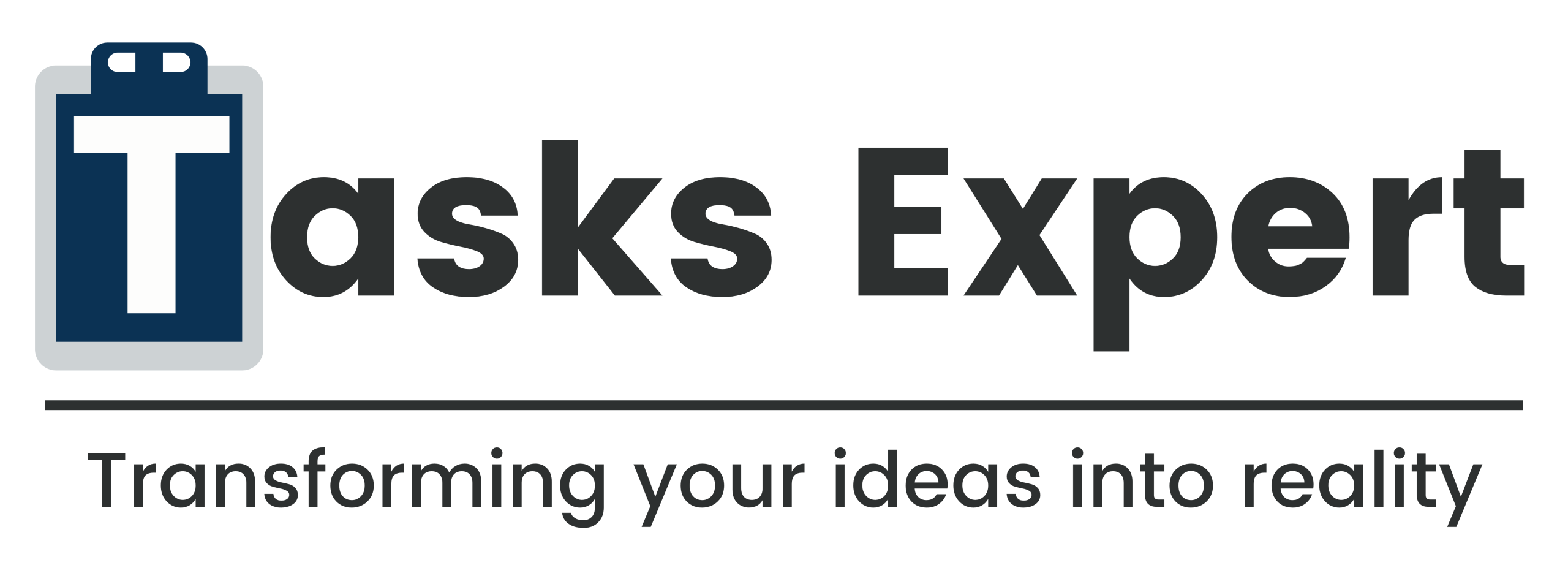Introduction
Cloud computing has become the backbone of modern enterprise. Between file storage, collaboration, and the way we manage our customers and clients, the cloud equals convenience, scalability, and quick ROI. But with the good comes some bad; these are the Cloud Computing Risks.
Data theft, account takeovers, compliance violations, and unsafe access controls are just a handful of risks plaguing businesses going online. Cloud providers invest significantly in secure IT, but protecting your sensitive data is not solely the provider’s responsibility; it’s the user’s responsibility too.
Identifying risks and digital tools is not enough to keep data safe. Following the right strategies is equally necessary for businesses to stay secure while still enjoying the benefits of cloud computing.
In this blog, we will understand the crucial Cloud Computing Risks and how to adequately protect data. From encryption to training for employees, these tactics can help bolster cloud security and ensure that your business remains competitive and compliant.
Perception of the Most Significant Cloud Computing Risks
For a company to improve cloud security, it first needs to know the various types of Risks to Cloud Computing that are out there, crawling around, ready to gobble up entire operations. These vulnerabilities don’t just come from technical vulnerabilities but also human failure and non-compliance. Knowing that ahead of time helps companies design risk mitigations rather than respond to problems after the fact.
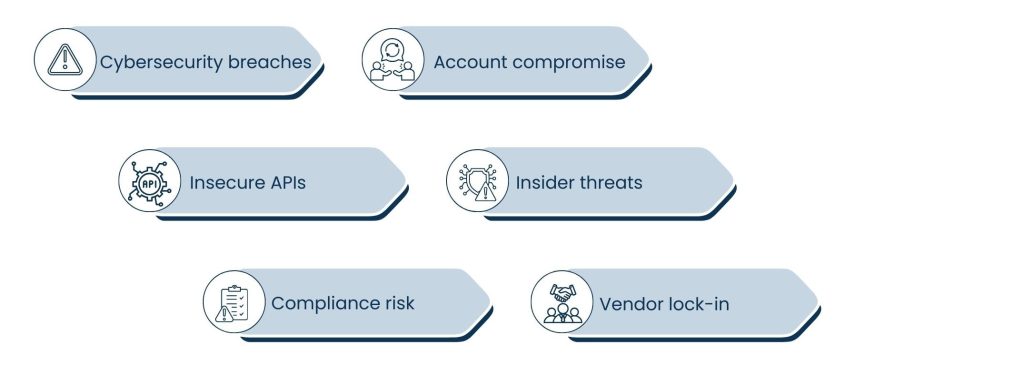
Cybersecurity breaches:
Among the most-cited types of risk, these breaches involve theft of confidential information and sensitive IP. Hackers find insecure cloud databases, and a single breach could hurt a company’s reputation and lead to financial fines.
Account compromise:
Weak or reused credentials allow attackers to hack cloud accounts. From there, they can try to steal data or sabotage services from inside. It may be the case that multi-factor authentication and continuous monitoring of log-in sessions provide a defence against this attack.
Insecure APIs:
Cloud APIs are used to connect cloud applications and services; however, when not properly secured, these can create an entry point for cybercriminals. Improperly implemented APIs could let attackers access sensitive data and perform functions. Consistent API testing and a secure coding mentality can help to offset this threat.
Insider threats:
Authorized employees or contractors might misuse data intentionally or publish it by mistake. Insider risk is a reminder of the necessity for access controls, user activity tracking, and educating staff.
Compliance risk:
If you are operating in industries that have to comply with regulations such as healthcare, finance, or retail, you need to adhere to standards (GDPR/PCI DSS/HIPAA, etc). Misconfigurations in the cloud could lead to breaches, fines, and lost confidence from customers. Compliance should be viewed on a continuum and be complemented by regular audits.
Vendor lock-in:
Strong dependency on one cloud provider without articulated exit strategies. They could run into trouble if costs go up or service quality deteriorates. Multi-cloud strategies and data portability planning mitigate against this vulnerability.
Identifying such Cloud Computing Risks can help organizations to build better cloud risk management approaches in order to protect data, preserve compliance, and guarantee long-term resilience.
How to Protect Data From Cloud Computing Risks?
Cloud-based data needs more than a provider’s security. To do so, businesses require a layered strategy to reduce Cloud Computing Risks and to maintain their system against threats that can lead to these risks. Optimal security involves implementing security at each point, including access control to end-user awareness.
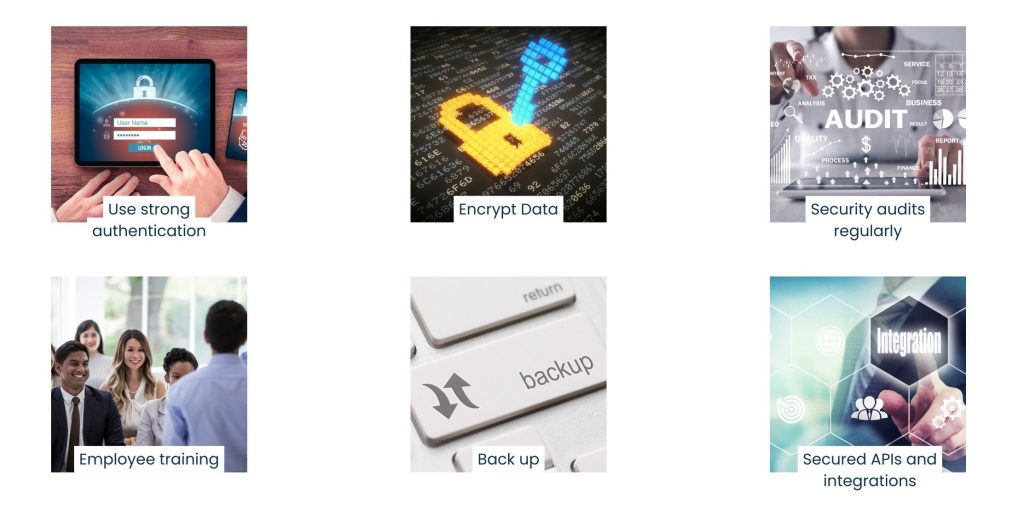
Use strong authentication:
A second layer of defense with multi-factor authentication demands identity proof. Stolen passwords are still a threat, but MFA means unauthorized access is not easy.
Encrypt Data:
Encode data so that sensitive data remains unreadable even if the files or the database are breached. Enterprises also have to keep encryption keys secure for added protection.
Security audits regularly:
A single setup is not enough for cloud security. We need to keep an eye on systems and conduct regular scans, and look for weak points before the bad person tries them out. The Security Audits also validate against the compliance checks being consistently met.
Employee training:
Most breaches are the result of human error. Educating staff in safe cloud practices will dramatically reduce risks. The best defense is often well-informed employees.
Back up:
Ultimately, even the most bulletproof system can be disabled by a click when your service gets disrupted by a case of accidental data deletion, malware, or service disconnection. If you have recent backups on hand, in whatever safe places remain, your data might be able to be restored quickly, and your business could be up and running with minimal damage incurred.
Secured APIs and integrations:
Since APIs integrate different applications and systems and facilitate information exchange, they are frequently attacked as well. By using secure coding practices, current frameworks and libraries, and strong API access identification and authentication, it is possible to mitigate this attack vector.
A layered approach that incorporates these countermeasures specifically addresses technical and human weaknesses. Organizations used to those processes mitigate Cloud Computing Risks and gain the assurance to innovate and scale in the cloud.
Cloud Compliance and Regulatory Cloud Computing Risks
When enterprises deploy cloud technologies, compliance is the last thing on their minds. In all verticals, regulators have established very explicit demands for how and where data needs to be stored, accessed, and maintained. If you don’t satisfy these provisions, your business will not only be vulnerable to Cloud Computing Risk, but you can also be hit with stiff fines, damaged reputation, and loss of customer credibility.
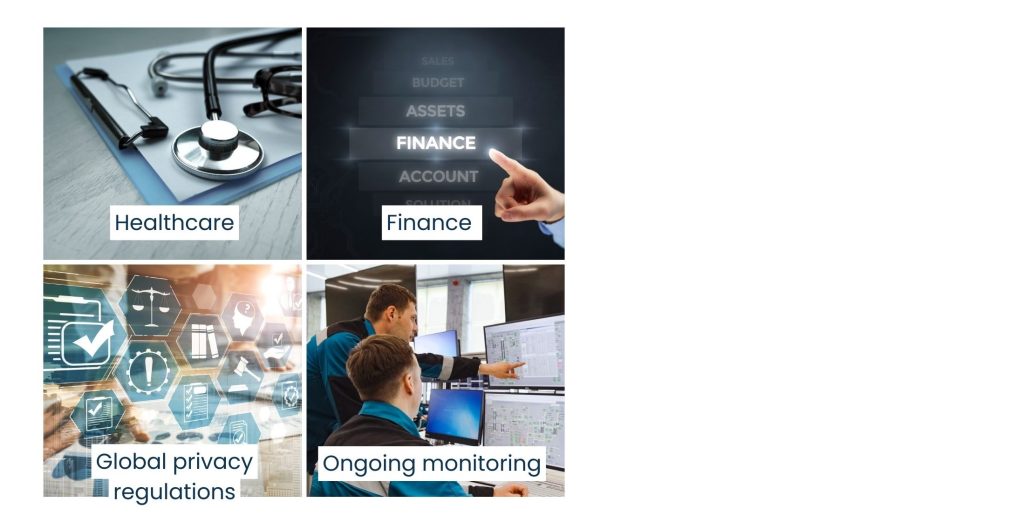
Healthcare:
HIPAA Health Information Privacy is a federal law that requires medical service providers to safeguard patients’ medical records. Private medical data might be leaked due to a misconfigured cloud storage system or an insecure communication channel. Penalties and patient trust can be compromised with any kind of infraction, however slight. Thanks to AI-driven monitoring and robust encryption, health organizations can keep up with the one-off, immutable storage bylaws, but also receive the cloud benefits and a strong data residency model.
Finance (PCI DSS, SOX):
Financial services organizations need to adhere to PCI DSS to protect payment data and SOX to demonstrate corporate accountability. If credit card data or transaction records are compromised as a result of poor security in a cloud, the penalties could be devastating. Professional security services are designed to give institutions advanced encryption, auditing tools, and access control to meet these standards.
Global privacy regulations (GDPR, CCPA):
Today’s market often sees an organization with consumer data in multiple regions/businesses. And rules such as Europe’s GDPR and California’s CCPA insist on transparency, consent management, and strong data privacy habits. Cloud services that go astray with data can put companies at risk of being sued and their customers going elsewhere. Then, strong governance and monitoring would be the way to keep things in sync, region by region.
Ongoing monitoring:
Compliance is about more than a one-time solution. They can also swing over to where the cloud provider offers features that are compliance-ready, and companies have to configure and maintain them. Regular audits, risk analyses, and compliance checklists are also necessary as the standards continue to change.
By businesses that make compliance part of their overall business strategy, businesses not only avoid costly penalties, but they also build the trust of their clients and stakeholders. Addressing the Risk of Cloud Computing from a compliance standpoint sets an organization’s cloud environment up to scale effectively, with the peace of mind that its solutions are compliant and secure.
How to mitigate vendor and multi-cloud Computing Risks
One of the less apparent but equally dangerous cloud computing risks is the risk of being tied to a solitary third-party provider. Businesses frequently transport their workloads to a big cloud provider such as AWS, Microsoft Azure, or Google Cloud, and think that once the move is done, they can sit back and enjoy great system performance.
Without further concerns. But relying on a single source can leave firms vulnerable in a host of ways that can limit their capacity to compete, trap them in unyielding relationships, or even result in their paying more over time.

Vendor lock-in:
Cloud migration can be more difficult than it seems. If there is a secret formula of your own APIs and formats, vendor or application-specific APIs and formats, migration is likely to be costly and disruptive to you. Companies that fail to plan for portability at the start may find themselves locked into one vendor, unable to negotiate better pricing or adopt innovative solutions elsewhere.
Service outages:
The largest services are not immune to downtime. The company was just one of the top internet companies in the world, and a global service disruption for a company can mean that businesses that are reliant on one provider cannot function at all. A further level of redundancy comes from the distribution of information over multiple clouds to diminish the impact of outages and maintain access to significant services.
Data portability hurdles:
Some services limit the scope of how data can be exported or transferred. That makes it more difficult for our organizations that are trying to diversify and switch to other platforms. Open Standards Use and Flexible Architecture Design can minimize this danger.
Uncertain costs:
The pricing model can be altered at any time, and sometimes costs more to operate under the new model. Businesses that are entirely dependent on a single provider are all but powerless to challenge such price hikes. Doing a multi-cloud strategy helps businesses to compare and balance the cost of each provider.
Through employing multi-cloud approaches, businesses build resilience and have flexibility. Rather than placing all the eggs in one basket, workloads can become more diversified by spreading across multiple vendors, with potential risk to outages, data lock-ins, and compliance predicaments lowered. Companies, too, get the power to negotiate, offering them protection against undesirable contracts or price increases.
Mitigating the risks of vendors and multi-cloud isn’t about junking the big providers, but about planning well. With these risks being tackled through a lens of general cloud risk management, businesses can build an evergreen cloud strategy that can easily accommodate change.
Challenges in AI and Cloud Integration
Today, artificial intelligence (AI) and the cloud are inextricably linked. Many organizations indeed operate their AI models, analytics tools, and machine learning workloads in the cloud, as it offers scalability and cost-effectiveness. While the integration with Cloud Computing introduces some new opportunities, it also creates an entirely new field of Cloud Computing Risks that the enterprise has to carefully evaluate.

Data abuse:
AI ends up depending upon enormous swaths of data. If data stored in the cloud is misused or inappropriately accessed, you may fail to comply with privacy regulations like GDPR or CCPA. As AI often uses personal or financial data, any abuse can lead to a fast escalating compliance question.
Model bias and fairness:
AI models trained based on biased datasets may make unfair predictions. These oversights expand quickly across a global platform when the models are hosted in the cloud. Companies should strive to maintain accurate, representative, and frequently audited AI training data.
Transparency challenges:
AI algorithms can be inscrutable, frequently referred to as “black boxes.” Hosted in the cloud, the inability to see how decisions are made can cause trust relationships with customers and regulators. We, as a collective of cloud providers and businesses, need to collaborate more in order to achieve accountability and explainability.
Security gaps:
Such AI systems are susceptible to cyber attacks. Attackers may try to corrupt training data. AI workloads are also common in shared cloud environments, making them potentially appealing targets for attackers.
Resource utilization:
Cloud-based execution of AI models can be expensive in terms of resources. Without good oversight, companies may end up racking up more charges or falling prey to denial-of-service attacks that sap computing power.
There is a fine line dividing these two possibilities, and it will demand a mix of cloud governance and security hygiene. Enterprises have to consider AI and cloud security together to create systems with fairness, compliance, and resilience built in. As AI use becomes more and more prevalent, this kind of increased proactive response to the Cloud Computing Risks will be very valuable in helping maintain trust and competition going forward.
Cloud Computing Risks- Insider Threats in the Cloud
Businesses typically think of cyber risks as originating from external hackers. It may sound bizarre, but some of the most impactful Cloud Computing Risks arise from within. Insider threats happen when employees or other insiders with dedicated access to a company’s network mishandle data, either maliciously or by mistake. In a cloud setting, data is the centre of gravity, and since it can be concentrated, the potential effect of insider threats is more intense.
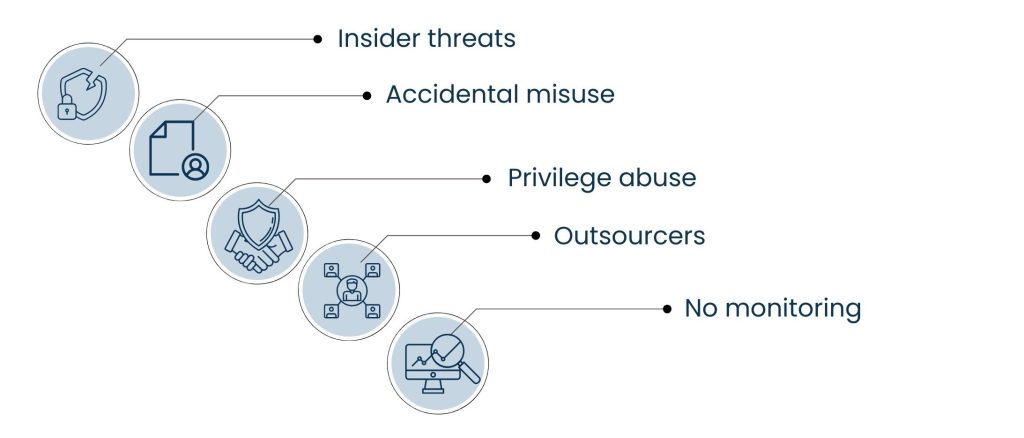
Insider threats:
Employees or third-party contract workers who have access to cloud systems, who maliciously leak or delete sensitive data. It can be difficult to detect because they already have valid credentials. It takes tight permissions and watchfulness to contain the damage.
Accidental misuse:
Not all insider threats are intentional. Files can accidentally be made public by an employee, cloud storage set up improperly, or a phishing attack can compromise his or her account. Training and education will do the most in reducing those avoidable mistakes.
Privilege abuse:
If an employee who has been trusted with more access than they require, chances are, they can accidentally or intentionally abuse it. The security risk can be mitigated with the principle of least privilege, or only giving access to what is needed for the job, but this risk still exists.
Outsourcers:
Many outsourcers are used, and many of them need access to the cloud. However, with inadequate vetting and oversight, these outside insiders add new entries to the list of threats. Stringent security guidelines should always be part of vendor contracts.
No monitoring:
Without logging and real-time monitoring, businesses may not discover that their data has been mishandled until it is too late. Instruments that monitor user actions, flag strange habits, and implement policies are vital.
To address insider threats, organizations need to mix technology with culture. Robust identity management, multi-factor authentication, and constant monitoring are the technical armour. At the same time, promoting a culture of trust, accountability, and security awareness causes employees to be more responsible.
By including insider threats in the overall cloud risk management, companies can close one of the most overlooked security gaps. As important as it is to defend against hackers, so, too, is guarding against insiders when data is in the cloud.
Conclusion
The cloud revolution offers numerous advantages, but introduces a different set of risks associated with the technology. From breaches and compliance to vendor lock-in, cloud computing risks can be very seriously harmful to business and brand if not managed.
It’s time to be more proactive with security. High-intensity Identity and Access Management, encryption, staff instruction, compliance monitoring, as well as multi-cloud approaches are key to protecting data well. Organizations that embrace these practices as part of their cloud journey can receive the benefits of the cloud without compromising on security.
As the cloud goes mainstream, however, there is no question that new risks are brought into existence. But such firms can turn cloud security into a competitive advantage, so long as they have the right frame of mind and executive support for the effort. By re-contextualising Cloud Computing Risks as potent enablers in building resilience, businesses prepare themselves for lasting success and prosperity in a digital-first world.
About Us
Tasks Expert offers top-tier virtual assistant services from highly skilled professionals based in India. Our VAs handle a wide range of tasks, from part time personal assistant to specialized services like remote it support services, professional bookkeeping service etc. Furthermore, it helps businesses worldwide streamline operations and boost productivity.
Ready to elevate your business? Book a Call and let Tasks Expert take care of the rest.




